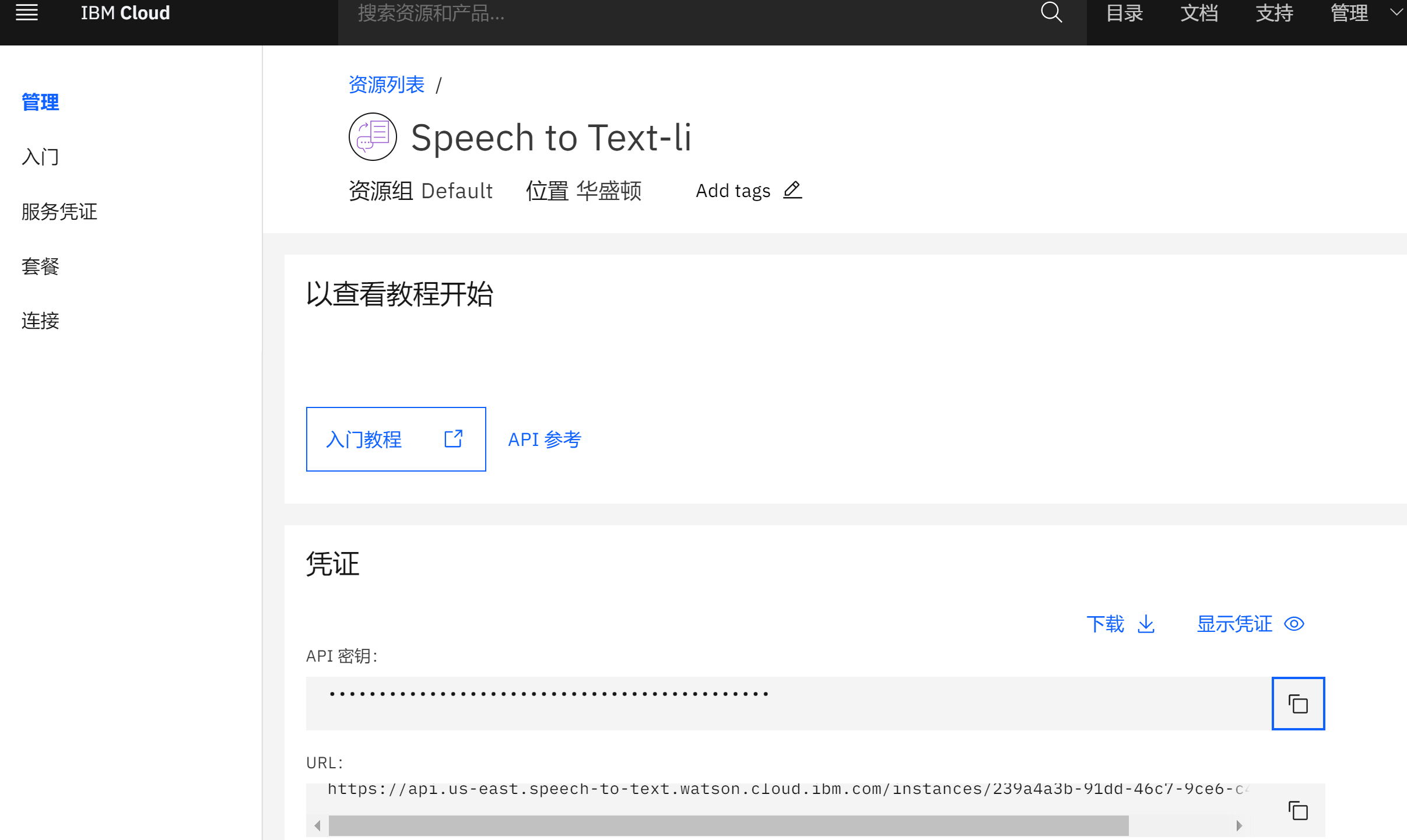Python 是一门通用性很强的语言,本文主要讲述其中的音频模块 gtts(Google文本到语音)的使用。
1.音频模块简介
文本转语音:
格式转换:
发音:
pyttsx3:系统内置语音引擎实现发音,不生成mp3
win32com:Windows操作系统内置的语音引擎实现文字发音
音频转文字:
SpeechRecognition:IBM speech to text
谷歌gTTS模块:gtts文档 api文档
2.模块安装 1 2 3 4 5 pip install gTTS pip install baidu-aip pip install playsound pip install pyttsx3 pip install SpeechRecognition
3.文字转音频 3.1.gtts模块使用 1 2 3 4 5 6 7 from gtts import gTTSdef text2voice () : """文字转语音 - 谷歌 gtts模块""" tts = gTTS(text="oh 宝贝! come on, baby!" , lang="en" ) tts.save("test.mp3" )
3.2.百度合成
进入语音合成网站 ,登录创建应用
1 2 3 4 5 6 7 8 9 10 11 12 13 14 15 16 17 18 19 20 21 22 23 24 25 26 27 28 29 30 from aip import AipSpeechAPP_ID = '你的 App ID' API_KEY = '你的 Api Key' SECRET_KEY = '你的 Secret Key' client = AipSpeech(APP_ID, API_KEY, SECRET_KEY) def text_mixin_vocie () : result = client.synthesis('你好吗?' , 'zh' , 1 , {'vol' : 5 , }) if not isinstance(result, dict): with open('auido.mp3' , 'wb' ) as f: f.write(result) def get_file_content (filePath) : cmd_str = "ffmpeg -y -i %s -acodec pcm_s16le -f s16le -ac 1 -ar 16000 %s.pcm" %(filePath, filePath) os.system(cmd_str) with open(filePath + ".pcm" , 'rb' ) as fp: return fp.read() res = client.asr(get_file_content('audio.m4a' ), 'pcm' , 16000 , { 'dev_pid' : 1536 , }) print(res) print(res['result' ])
3.3.语音播放 1 2 3 4 5 from playsound import playsounddef play_voice () : playsound("store/test.mp3" )
3.4.文字发音
1 2 3 4 5 6 7 import win32com.client as windef word_pronunciation () : speak = win.Dispatch("SAPI.SpVoice" ) speak.Speak("come on, baby!" ) speak.Speak("宝贝儿,你好!" )
pyttsx3 模块可能会安装失败,可去官网下载指定版本
1 2 3 4 5 6 7 8 9 10 import pyttsx3def word_pronunciation_v2 () : engine = pyttsx3.init() engine.setProperty("voice" , "HKEY_LOCAL_MACHINE\SOFTWARE\Microsoft\Speech\Voices\Tokens\TTS_MS_ZH - CN_HUIHUI_11.0" ) engine.say('开始语音合成中...' ) engine.say("你好吗?宝儿姐..." ) engine.say('全世界都在说中国话...' ) engine.runAndWait()
4.音频转文字 4.1.注册IBM应用
首先去Speech to text官网 注册.
4.2.获取凭证
到管理页面,获取凭证
4.3.转换实现
入门教程: Speech to Text
python接口使用参考
音频转换文字方式:
1 2 3 4 5 6 7 8 9 10 11 12 13 14 15 16 import speech_recognition as srimport requests harvard = sr.AudioFile('audio.wav' ) r = sr.Recognizer() with harvard as source: audio = r.record(source) print(type(audio)) IBM_USERNAME = '******' IBM_PASSWORD= '******' text = r.recognize_ibm(audio, username = IBM_USERNAME, password = IBM_PASSWORD, language='zh-CN' ) text = r.recognize_google(audio, language = 'zh-CN' ) print(text)
5.音频格式转换 5.1.ffmpeg的使用 5.1.1.安装ffmpeg
参考:ffmpeg使用参考
5.1.2.引入exe路径:
将 ffmpeg 添加到环境变量
在代码中引入 ffmpeg 路径
5.1.3.实现转换 1 2 3 4 5 6 7 8 9 10 11 12 13 14 def trans_voice_type () : """音频格式转换""" source_path = "xxx" save_path = 'xxx' source_file = os.listdir(source_path) for source in source_file: old_path = os.path.join(source_path, source) new_name = os.path.join(save_path, source[:-4 ]) print('正在转换音频:{}' .format(new_name)) os.popen("C:\\python\\python36\\Tools\\ffmpeg\\bin\\ffmpeg.exe -i " + old_path + " " + new_name + ".wav" ) print('所有音频转换完毕!' )
5.2.pydub的使用 5.2.1.安装pydub 5.2.2.实现转换 1 2 3 4 5 6 7 from pydub import AudioSegmentdef convert_video (file_path) : outfile = os.path.splitext(os.path.realpath(file_path))[0 ] + '.wav' AudioSegment.converter = "C:\\python\\python36\\Tools\\ffmpeg\\bin\\ffmpeg.exe" AudioSegment.from_file(file_path).export(outfile, format='wav' )
以上关于pydub转换时,会有FileNotFoundError报错信息,这是由于依赖程序ffmpeg未找到,手动设置后,依旧没解决,这里做个标记,后续解决再补充,或者有人知道的可以告诉我一下,感谢!



